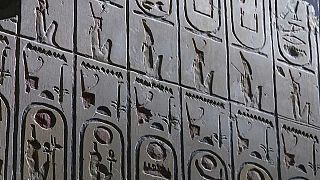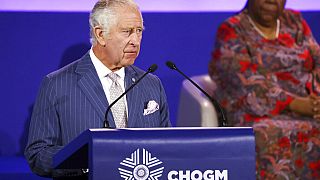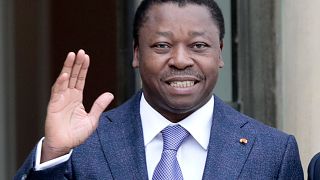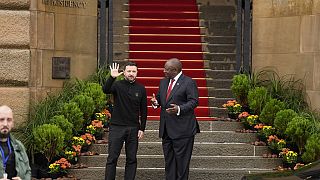Rwanda
Prince Charles laid a wreath on Wednesday at a memorial to the 1994 genocide in Rwanda during the first visit to the country by a British royal.
The Prince of Wales and his wife Camilla paused in silent tribute at the Kigali Genocide Memorial, the final resting place for more than 250,000 victims of the massacres almost three decades ago.
The royal couple signed a note of remembrance to accompany a wreath of white flowers.
They also spoke with survivors of the genocide in which some 800,000 mainly Tutsi people were murdered by Hutu extremist forces over about 100 days between April and July 1994.
Housing skulls, bone fragments and shreds of clothing, the memorial is a confronting testimony to the horrors of the genocide and a customary stop for foreign dignitaries visiting Rwanda.
Charles and Camilla also toured the memorial museum where they viewed photographs of the victims and their possessions and heard personal testimonials about the killings.
The royal couple touched down late Tuesday in Rwanda where the Prince of Wales is representing his mother, Queen Elizabeth II, at a Commonwealth summit this week.
The leaders of many Commonwealth nations are expected in Kigali in the coming days for the meeting of the 54-member club of mainly former British colonies.
Rwanda, a former German and Belgian colony, joined the Commonwealth in 2009 and has in recent years moved closer to the English-speaking world.
Inaugurated in 2004 during the 10th anniversary of the killings, the Kigali Genocide Memorial has an education centre, a garden, library, and a 1200-seat amphitheater that hosts workshops, plays, and cultural films.
The victims' remains are laid out in three main rows, and more have been buried as new graves are uncovered around the country.
At the burial ground, The Wall of Names is dedicated to victims of the genocide.












01:02
Sudan accuses UAE of contributing to genocide
Go to video
A British woman gives birth after UK’s first womb transplant
02:26
Mixed feelings in Goma ahead of DR Congo's talks with M23 rebels
00:51
UK is finalising Chagos deal with Mauritius
01:24
UK PM Keir Starmer slams previous government's Rwanda immigration scheme as "inefficient"
01:15
Burundi accuses Rwanda of plotting attack